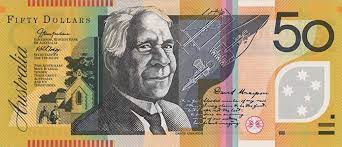AUD News: Australian Dollar
The Australian Dollar initially got off to a poor start this week, tumbling in response to an escalation of tensions between Australia and China, as Canberra called for Beijing to apologise for sharing a fake image alluding to Australian war crimes in Afghanistan.
But it didn’t take long for the AUD to begin its recovery, rising on the back of some positive Chinese economic data.
AUD investors also cheered the publication of Australia's latest GDP figures in midweek as domestic growth was shown to have expanded at a faster-than-expected pace in the third quarter.
However, the bulk of the Australian Dollar’s gains came in the second half of the week, with the risk-sensitive currency surging after the UK approved the Pfizer coronavirus vaccine and the US prepared to pass a new stimulus package.
Australian Dollar (AUD) Exchange Rates Weekly ReviewAUD/USD trading at: 0.7415 – Up a cent on the week’s low
AUD/GBP trading at: 0.5534 – Up a cent on the week’s low
AUD/EUR trading at: 0.6124 – Down a cent on the week’s high
AUD/NZD trading at: 1.0509 – Unchanged on the week’s opening level
*Rates shown are market rates, not available to the public. Rates are current as at 4 December 2020.
What's ahead for the next week for the AUD?
Looking ahead, we expect the Australian Dollar to remain buoyant through next week’s session so long as the market mood remains broadly positive.
In terms of data there will be a few domestic releases of note to AUD investors, including:
Business Confidence (Nov)
Consumer Confidence (Dec)
RBA Bulletin
Of these, the priority will be on the latest confidence figures, with the AUD potentially strengthening if Australia’s successful fight against the coronavirus helps to bolster business and consumer sentiment.
In overseas markets, the spotlight is likely to be on Brexit, uncertainty over which could infuse considerable volatility into the Pound. For EUR investors the focus will be on the European Central Bank’s (ECB) policy meeting, amidst expectations the bank will expand its quantitative easing programme, whilst USD investors will look to the latest US inflation figures.




Comments
Post a Comment